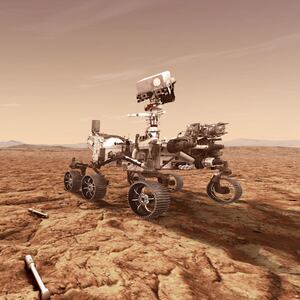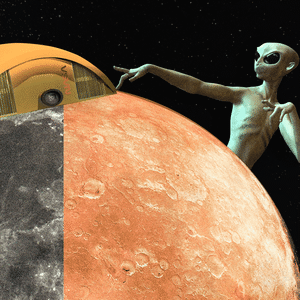If we end up ever colonizing Mars, we will almost certainly be able to count on the fact that we’ll be running our homes on clean, sustainable energy. Most experts will tell you solar power will be the way to go; hell, even nuclear, despite the risks, is seen as a more viable option. But as it turns out, we might one day see wind farms dotting the red, barren landscape as far as the eye can see.
According to a new study run by NASA scientists and published Dec. 19 in Nature Astronomy, Martian winds could be a reliable source of energy on the Red Planet—and perhaps even afford the opportunity to explore and settle new locations we hadn’t previously thought possible. On its own, the paper doesn’t radically change how we think about potential Mars habitats, but it does add a new layer to contemplating how human communities could diversify their energy needs to thrive on Mars in the distant future
“Wind power represents a stable, sustained energy resource across large portions of the Mars surface,” the authors wrote. “We find that wind speeds at some proposed landing sites are sufficiently fast to provide a stand-alone or complementary energy source to solar or nuclear power.”
Wind has previously been an ignored and largely understudied part of Mars. After all, it’s more difficult to study using Earth-bound telescopes and Martian orbiters. Recently, though, scientists have been able to actually observe and even listen to the winds blow on the planet thanks to the spate of rovers NASA has sent to Mars.
Armed with this new data, the new study employs climate modeling to determine how much total wind potential exists on the Red Planet, as well as determining how this varies over time and between regions.
This type of modeling isn’t just important to understand the climate of Mars, but also in how we can use it to power future colonies. Having multiple sources of energy can greatly boost the odds of a successful long-term mission on the planet. The sun isn’t going anywhere, but having redundancy is important in case something breaks or fails at any given moment.
But the most interesting takeaway from the study has to do with water. If humans want to settle Mars, they need to do so in places where it’s easy to harvest water via ice reserves, which are most readily available near the North and South poles. These places also happen to get less sunlight than the equatorial regions (just like on Earth). So the NASA team set out to learn whether wind energy could help make up the difference near the poles.
And what they found was that in several locations, “annual average wind power exceeds available solar power by up to 3.4 times.” In particular, these locations include the northern regions of Deuteronilus Mensae and Protonilus Mensae, where arrays of wind turbines a couple hundred feet tall could be erected without too much trouble.
All of this is getting ahead of the fact that humans have yet to actually set foot on Mars. We still haven’t even returned to the moon yet. But people are hoping to avoid inundating Mars with the same kind of energy squabbles and constraints we currently deal with on Earth. Planning early with several different technologies could save us from a ton of grief down the road.








